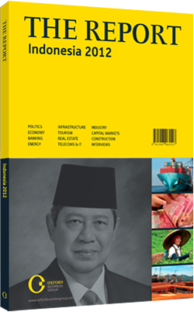A star performer: South Sumatra receives recognition for its strong development potential
The year 2011 could turn out highly important for the Indonesian province of South Sumatra, as it prepares to host the South East Asian (SEA) Games, an event that will focus regional attention on an up-and-coming investment destination. Indeed, the province also hopes to benefit widely from the attention it has received as one of the country’s Regional Champions – provinces that are to receive special promotion by the Indonesia Investment Coordinating Board (BKPM).
South Sumatra received that status in 2010, along with the provinces of East Kalimantan, Nusa Tenggara Barat (NTB), Papua, West Java, East Java and Riau. Selection was made on the basis of the province’s ability to attract and sustain foreign and domestic investment, a facility that was measured according to the strength of existing hard and soft infrastructure, the business-friendly approach and institutional framework of the local authorities and the level of economic growth. South Sumatra scored well on all of these, making it one of Indonesia’s star investment provinces.
FACTS & FIGURES: South Sumatra has an area of about 99,598 sq km, and a population of 7.22m people. Figures from the BKPM show that in 2010, when the province’s oil and gas is counted in, it had a per capita GDP of Rp21.9m ($2622), given a GDP of some Rp157trn ($18.9bn). It has its own international airport, Sultan Mahmud Badaruddin II (PLM), at Palembang, the provincial capital. This is the largest city in Sumatra, apart from Medan, and is the seventh-largest city in Indonesia, with a population in 2010 of around 1.5m.
The city also has a distinguished past, being the ancient capital of the Srivijaya Empire, a Hindu kingdom that once ruled on both sides of the Malacca Straits, encompassing an area stretching from Southern Thailand to Java. Indeed, this location, close to key regional and global trade routes, is what modern-day South Sumatra is attempting to leverage.
The other major factor the province has going for it is a wide supply of hydrocarbons – from coal to oil and gas. Indeed, South Sumatra is potentially one of the world’s coal kings. According to Central Bureau of Statistics figures, of Indonesia’s total coal reserves of 104.8bn tonnes, 52.4bn tonnes are in Sumatra, with 90% of these in South Sumatra.
DOWN THE CORRIDOR: The government’s Acceleration and Expansion of Indonesian Economic Development 2011-25 Master Plan (MP3EI) will be released in 2011. This establishes six economic corridors, each of which is to be given a special development focus. One of the corridors is Sumatra, which the plan aims to transform into a centre for the production and processing of natural resources – not only coal, oil and gas, but also palm oil, rubber and steel.
Palembang is to be one of the 11 economic centres of the corridor, with its port at Tanjung Api-Api set to become a key centre for its exports. Coal is likely to dominate these, as the production in the province is ramped up. Coal reserves have historically been rather neglected in Sumatra, with the whole island currently only responsible for around 20m tonnes per year, some 10% of Indonesia’s total production. Only one of the 10 largest coal firms operating in the country currently operates in Sumatra. This is due to the reserves location largely in the centre of the island, with difficult terrain making access to coastal ports a challenge.
The master plan aims to create a market for Sumatran coal in Sumatra first – by setting a target of 52% of the island’s power coming from coal-fired power plants by 2020. Schemes are also under way for railways and roads to boost the mines’ connectivity with the ports. An integrated port facility is also the key project being promoted under the Regional Champions scheme for South Sumatra.
Thus, the opportunities for investors in the province are extensive, with the Regional Champion status of South Sumatra an indication of its commitment to welcoming more foreign, as well as domestic, investment.
Palembang is also being targeted for an industrial cluster, as the master plan seeks to use the local resources as feedstocks to promote more value-added industries.
You have reached the limit of premium articles you can view for free.
Choose from the options below to purchase print or digital editions of our Reports. You can also purchase a website subscription giving you unlimited access to all of our Reports online for 12 months.
If you have already purchased this Report or have a website subscription, please login to continue.

